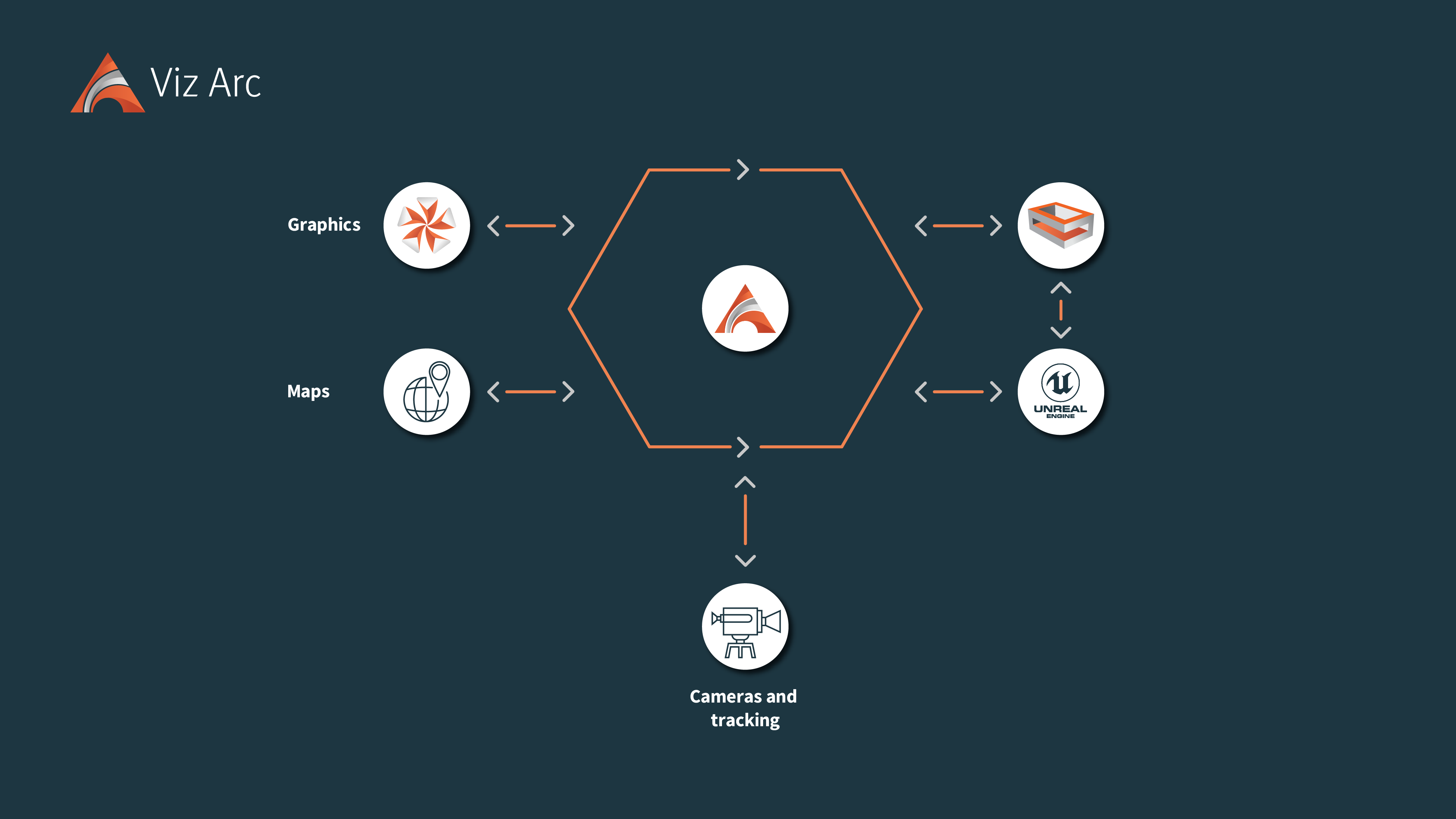
Viz Arc User Guide
Version 1.9 | Published October 31, 2023 ©
System Overview

Viz Arc is a control application that can be used for one or more Viz Engines. Viz Arc uses Graphic Hub and its REST API for browsing Scenes, Images, merged Geometries and Materials.
When working with tracked cameras in a Virtual Studio environment, Viz Arc communicates with Tracking Hub to send and receive camera tracking information. One of the key features of Viz Arc is the ability to set up Augmented Reality elements in outdoor productions directly over a map. A working internet connection is required to retrieve map imagery from providers such as Bing or OSM.
Ports
|
Application |
Port |
Protocol |
|
Viz Arc Web Service |
Default port: 5004 Default port: 5005 |
HTTP HTTPS |
|
Viz Arc REST Service (standalone service) |
Default port: 9004 Default port: 9005 |
HTTP HTTPS |
|
Viz Arc MQTT Broker |
Default port: 1883 |
TCP |
|
Vic Arc TCP Server |
Default port: 9204 |
TCP |
|
Viz Arc Template Script Viz Arc Main Script |
Debugging port: 9222 Debugging port: 9223 |
TCP TCP |
|
Viz Engine |
Default ports: 6100, 6800 Feedback port: 7476 |
TCP UDP |
|
Viz Arc Feedback |
Feedback port: 12050 |
UDP |
|
Graphic Hub REST |
REST API port: 19398 |
HTTP |
|
Tracking Hub |
Requests data through port: 20000 |
TCP |
|
Media Sequencer |
REST API port: 8580 |
HTTP |
|
Media Service |
for v4.1.0 and higher: 25506 for v2.3.3 and lower: 21099 |
HTTP |
|
Pilot Data Server |
REST API port: 8177 |
HTTP |
|
Coder |
Coder port: 8081 |
HTTP |
|
Unreal Engine |
arcCom port: 5647 |
TCP |
|
Unreal Launcher |
VizArcUnrealLauncher port: 5644 |
TCP |
|
Unreal Web Interface |
Default port: 30010 |
HTTP |
|
Unreal Web Socket |
Default port: 30020 |
TCP |
|
Vinten Automation Server |
Vinten port: 11239 |
TCP |
|
Viz One |
REST API port: 80 |
HTTP |
|
Viz Arena |
Web API port: 40055 |
HTTP |
|
Viz Object Tracker |
Default port: 10005 |
HTTP |
|
Art-Net Integration |
Default port: 6454 |
TCP |
|
Monogram Integration |
Default port: 51234 |
UDP |